
Wednesday’s ad is again possibly from the 1950s, and is another ad for the Indiana brewery Drewerys. This one features a Canadian Mountie and the following confusing tagline. “Canada’s Pride Brand Since 1877 … A Product of U.S.A.”
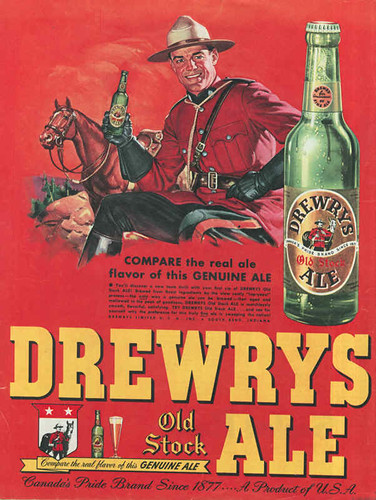
By Jay Brooks
By Jay Brooks

When I hear the term “drunken monkey,” I first think of the Chinese martial art, a kind of Kung Fu. There’s also a surprising number of bars and restaurants called Drunken Monkey this or that. But in searching for information on beer in Saint Kitts and Nevis, the Caribbean island nation who celebrates their independence day today, I found an old news report that there are real drunken monkeys. In Beware of Alcoholic Monkeys on St. Kitts, they recount how these monkeys were “originally imported to the island by pirates, [and] were introduced to the tantalizing effects of umbrella-laden mojitos and shots of tequila by tourists a few decades ago. Not surprisingly, they developed a heavy hankering for it.”
A group of scientists from McGill University in Montreal, Canada, along with a foundation on the islands, saw an opportunity and captured 600 monkeys to study their drinking behavior. The monkeys drinking habits broke down into somewhat predictable groups:
So that breaks down like so:
That looks similar to what I’d expect for people, too. Does anybody know how the same groups shake out for Americans, or humans across the world?
The UK’s Guardian summarized the results.
For many years, alcoholism in humans was thought to be purely a learned behaviour — the result of environmental factors. But more recent studies indicate that in humans, the tendency towards alcohol addiction has a genetic component: it tends to run in families. Research has found three regions on the human genome that may be linked to alcoholism. Unfortunately, since these areas contain up to 300 genes, it may be some years before specific “alcohol genes” are identified.
I think it is interesting that, despite living in a tropical paradise, without any economic problems or deprivation, this video clearly documents that some monkeys still become alcoholics. Additionally, this video shows how vervet monkeys’ alcohol use mirrors that of humans, suggesting that they too, have a genetic component. Further, human and vervet monkey DNA shares an 84.2% similarity. So even though it is difficult to study humans’ genetics and patterns of alcohol consumption, researchers can study vervet monkeys. So research is ongoing in these monkeys to better understand their patterns of alcohol use and abuse — valuable since scientists can carefully control the monkeys’ environment and the monkeys can be selectively bred so researchers can better understand the effects of particular genes on behaviour.
The study itself, Alcohol consumption in vervet monkeys: biological correlates and factor analysis of behavioral patterns, doesn’t reveal too much in the abstract, so I have to take the word of the two reports. But it certainly would be interesting to see if it does correlate to human behavior.

By Jay Brooks
![]()
Peter Rowe, the man behind the television show Dirty Jobs, has a new three-part series that debuts tonight: How Booze Built America. I suspect they’ll be playing fast and loose with much of beer’s history, but it should be at least an entertaining show. Check out the first episode on the Discovery channel. Check your local listings for times. Below is a teaser to give you a flavor of the show.
By Jay Brooks
![]()
Today in 1983, Saint Kitts and Nevis gained their Independence from the United Kingdom.
Saint Kitts and Nevis

Saint Kitts and Nevis Breweries
Saint Kitts and Nevis Brewery Guides
Other Guides
Guild: None Known
National Regulatory Agency: None
Beverage Alcohol Labeling Requirements: Not Known
Drunk Driving Laws: BAC 0.08%




Alcohol Consumption By Type:
Alcohol Consumption Per Capita (in litres):
WHO Alcohol Data:
Patterns of Drinking Score: N/A
Prohibition: None

By Jay Brooks

Tuesday’s ad is from perhaps the 1950s, for the Indiana brewery Drewerys. I’m assuming this is before Miller introduced their Lite beer and the slogan “tastes great, less filling.” Drewerys is using the somewhat similar “more flavor, less filling, more fun!” How about the faces the model is making to express each idea. Hilarious, that’s Big D.
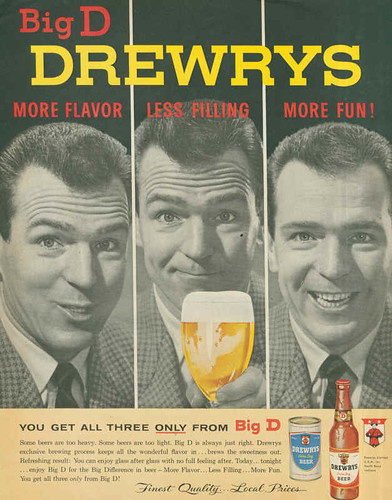
By Jay Brooks
![]()
Today in 1818, Chile gained their Independence from Spain.
Chile

Chile Breweries
Chile Brewery Guides
Other Guides
Guild: None Known
National Regulatory Agency: Servicio Agricola y Ganadero (SAG)
Ministry of Agriculture
Agriculture and Livestock Service
Beverage Alcohol Labeling Requirements: Yes
Labels must include the following information: Name and description, Bottler name and address, Country of origin, Alcohol content, Distributor name and address, Net volume. Ingredient lists are only required for mixed drinks (i.e., with multiple ingredients)
Drunk Driving Laws: BAC 0.05%

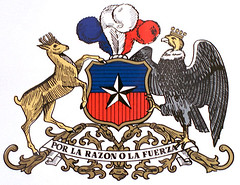
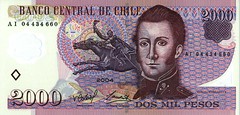
Before taking the first sip of a drink, you say “salud,” which means “to your health,” and be sure to look your host in the eyes. If a formal business proposal is being discussed, a toast is made to the success of the future deal, contract or agreement or to the person or company involved.
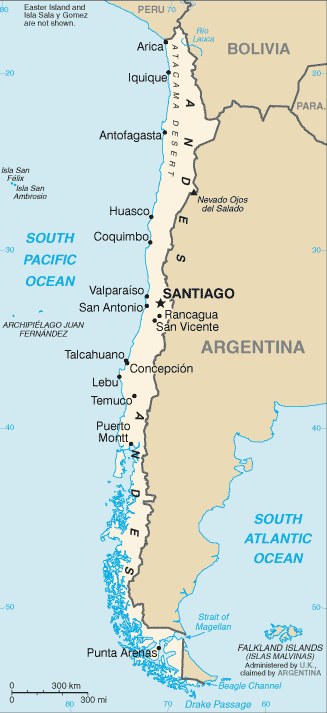
Alcohol Consumption By Type:
Alcohol Consumption Per Capita (in litres):
WHO Alcohol Data:
Patterns of Drinking Score: 3
Prohibition: None.
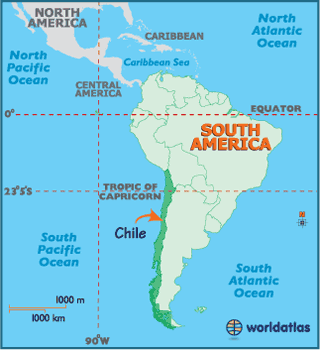
By Jay Brooks

Monday’s ad is from 1890, and is for a German, or at least German-speaking, country. The text, “Heute Bock,” translates as “today bock.” I’ve no idea if the ad, undoubtedly a poster of some kind, is for any particular brewery. It looks hand-colored. My guess is it was from a book of some sort. At the top is §11, which here in the states that symbol § is generally used in legal writing for “section” but in Europe it means paragraph in the same way we use the pilcrow sign ¶. So this was likely the cover or title page for Paragraph 11 of something. Anybody got a better explanation, or know what it’s from?
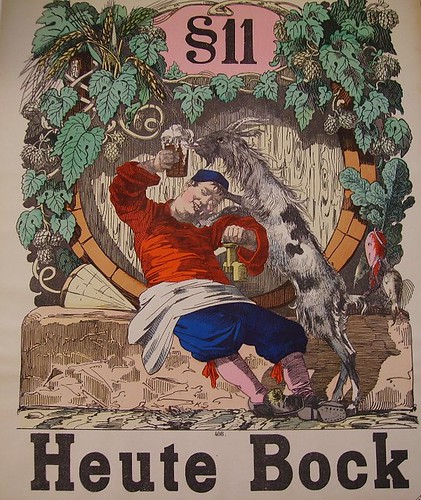
By Jay Brooks
![]()
Today in 1810, Mexico gained their Independence from Spain.
Mexico

Mexico Breweries
Mexico Brewery Guides
Other Guides
Guild: Asociacion Nacional De Cervez Mexico; Beer Manufacturers Association
National Regulatory Agency: Ministry of Health (Secretaria De Salud)
Beverage Alcohol Labeling Requirements: Labels must include the following information: Name or commercial trademark of the product; Name and address of importer; Net contents (in metric units); Country of origin; Alcohol content by percentage of total volume; Date marking, if applicable; Special instructions for use, storage, or handling, if necessary
Drunk Driving Laws: BAC 0.08% Note: Foreigners with recent (in the past 10 years) drunk-driving criminal convictions are generally refused entry at the border. Mexico’s Immigration Act section 36 considers any foreign drinking and driving outstanding charge or conviction as an Indictable offense (similar to a felony).




Alcohol Consumption By Type:
Alcohol Consumption Per Capita (in litres):
WHO Alcohol Data:
Patterns of Drinking Score: 4
Prohibition: Zapatista Communities will often ban alcohol as part of a collective decision. This has been used by many villages as a way to decrease domestic violence and has generally been favored by women. However, this is not recognized by federal Mexican law as the Zapatista movement is strongly opposed by the federal government.
The sale and purchase of alcohol is prohibited on and the night before certain national holidays, such as Natalicio de Benito Juárez (birthdate of Benito Juárez) and Día de la Revolución, which are meant to be dry nationally. The same “dry law” applies to the days before presidential elections every six years.

By Jay Brooks
![]()
Today in 1975, Papua New Guinea gained their Independence from Australia.
Papua New Guinea

Papua New Guinea Breweries
Papua New Guinea Brewery Guides
Other Guides
Guild: None Known
National Regulatory Agency: None
Beverage Alcohol Labeling Requirements: Not Known
Drunk Driving Laws: No BAC




Alcohol Consumption By Type:
Alcohol Consumption Per Capita (in litres):
WHO Alcohol Data:
Patterns of Drinking Score: 3
Prohibition: None

By Jay Brooks
![]()
Today in 1821, Nicaragua gained their Independence from Spain.
Nicaragua

Nicaragua Breweries
Nicaragua Brewery Guides
Other Guides
Guild: None Known
National Regulatory Agency: None
Beverage Alcohol Labeling Requirements: Not Known
Drunk Driving Laws: BAC 0.08%




Alcohol Consumption By Type:
Alcohol Consumption Per Capita (in litres):
WHO Alcohol Data:
Patterns of Drinking Score: 3
Prohibition: None

